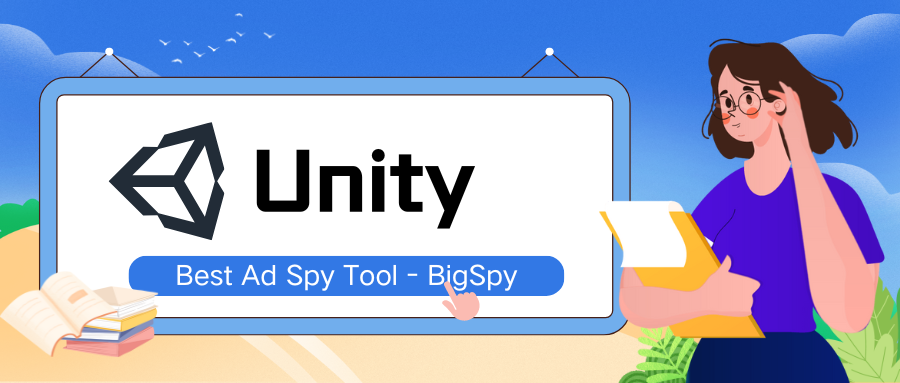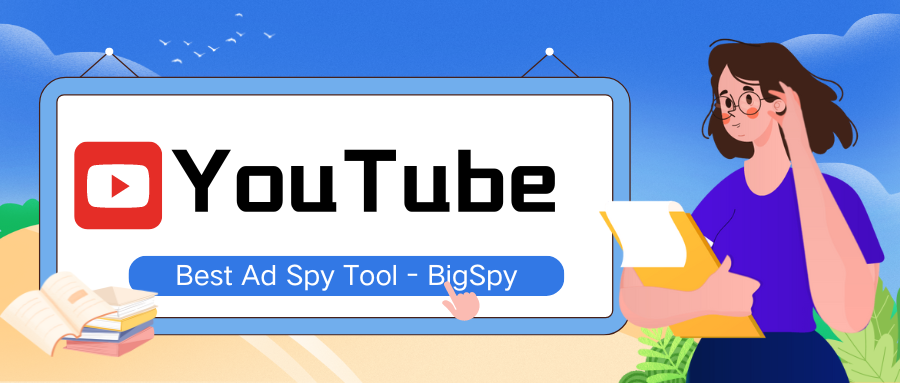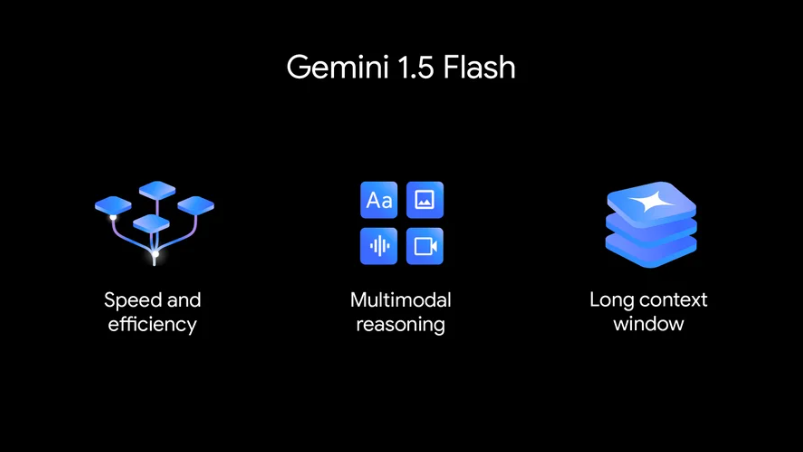OpenAI’s new GPT-4o trifecta: faster, stronger, and free!
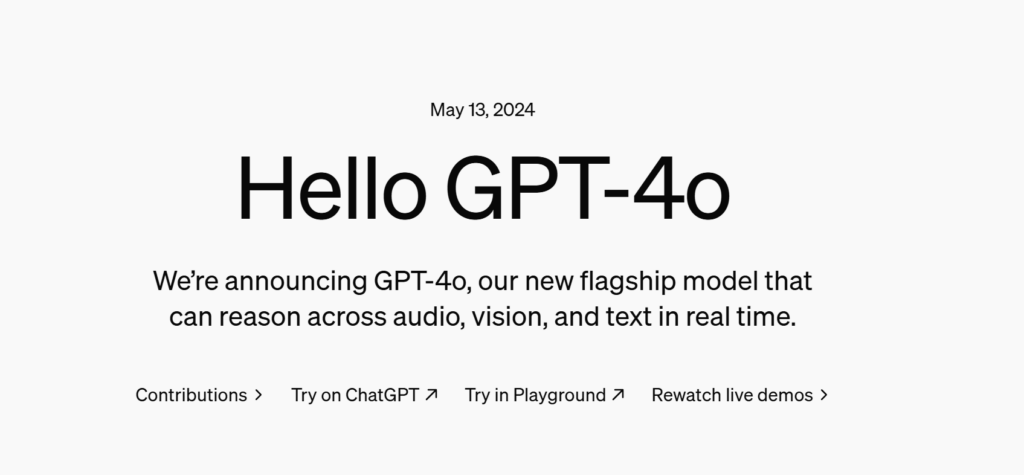
At OpenAI's May 13th launch event, GPT-4o quickly became the highlight. The official description of the product reads: "GPT-4o (‘o’ for ‘omni’) is a step towards much more natural human-computer interaction." This latest flagship product has captured global attention with its versatile capabilities—accepting any combination of text, audio, and images as input and generating corresponding outputs in these formats. The fact that GPT-4o is free has made it an instant favorite on the internet.
During the official demonstration, GPT-4o showcased impressive performance, with its response speed to audio inputs rivaling that of humans. From generating charts and statistical analyses to creating 3D model STL files, GPT-4o can accomplish tasks in a remarkably short time.
Key Improvements of GPT-4o
- Enhanced Multimodal Capabilities:
- GPT-4o supports richer multimodal inputs and outputs, understanding and generating text, images, and audio. This versatility allows it to handle complex tasks more efficiently.
- Higher Accuracy and Consistency:
- Compared to previous versions, GPT-4o exhibits significant improvements in semantic understanding and generation, producing more accurate and logically coherent content with fewer errors and inconsistencies.
- Improved Contextual Understanding and Memory:
- The new version offers better contextual understanding and memory capabilities for long-form content, maintaining more natural conversation flow and handling more complex dialogue scenarios.
- Stronger Personalization Capabilities:
- GPT-4o allows for more detailed customization of the model’s behavior and style to suit different application scenarios and user needs, providing more personalized services.
- Enhanced Programming and Technical Support:
- Optimizations in code generation, debugging, and technical problem-solving enhance GPT-4o's performance in professional domains like programming assistance and technical support.
These advancements make GPT-4o a more powerful and versatile tool across various applications, from creative tasks to technical problem-solving.
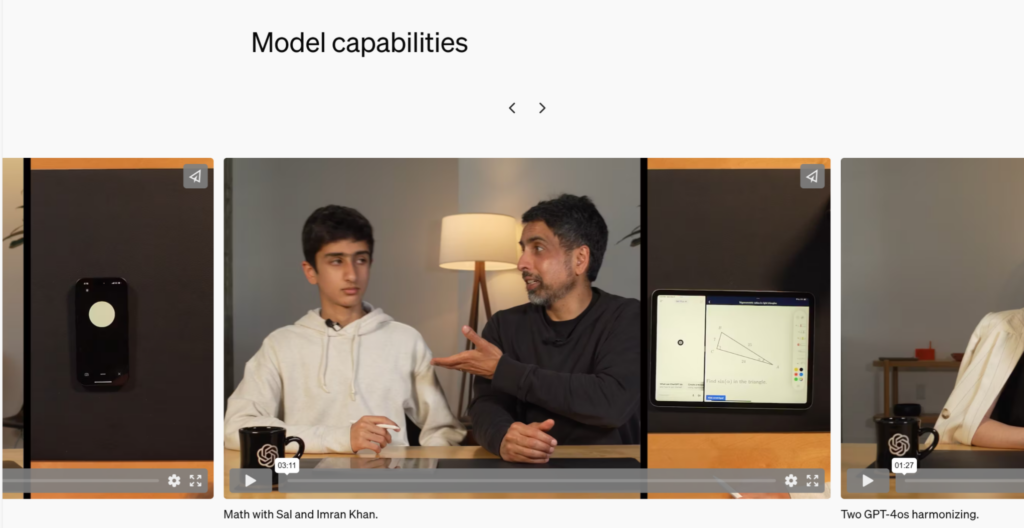
Performance and Applications
GPT-4o can respond to user voice input in as little as 232 milliseconds, with an average response time of 320 milliseconds, approaching human reaction times in everyday conversation. It excels in visual and audio comprehension, significantly enhancing non-English text performance and maintaining parity with GPT-4 Turbo in English text and code capabilities. The API operates twice as fast, with a fivefold increase in frequency limits and a 50% reduction in costs.

OpenAI's CEO, Sam Altman, emphasized that a crucial part of their mission is to provide advanced AI tools for free, allowing everyone to experience the technology’s capabilities firsthand.
Creative and Practical Uses
Users have found a variety of creative and practical applications for GPT-4o. For instance, one user utilized GPT-4o to solve the famous "Einstein’s Riddle," demonstrating its powerful logical reasoning abilities. Another developed an automatic stock picker, transforming complex stock selection criteria into a functional stock picker that outputs charts and archives data, significantly improving efficiency. GPT-4o’s handwritten prototype transcription feature has also been well-received. Users have successfully converted handwritten prototypes into initial HTML code, with GPT-4o maintaining data structure updates when changes occur. Additionally, GPT-4o exhibits strong optical character recognition (OCR) capabilities, accurately recognizing text within complex images.
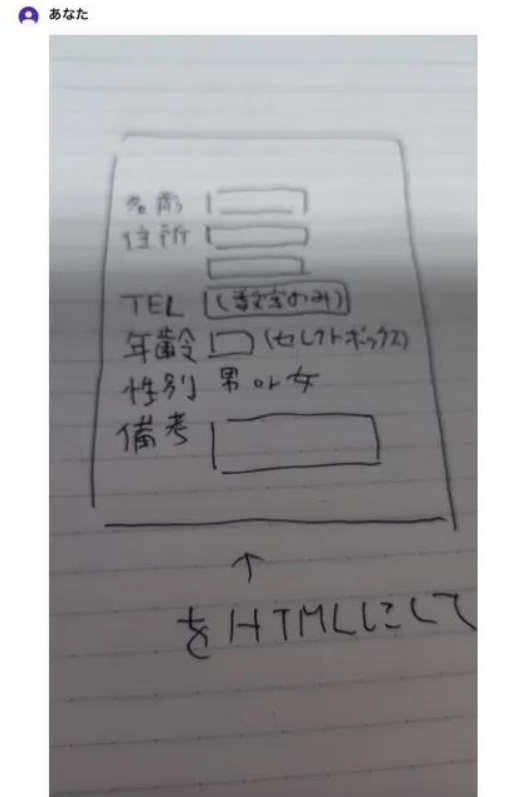
Industry Impact and Competition
The release of GPT-4o has stirred excitement within the industry. Sam Altman described the new model as "magical" in his preview on X platform. Meanwhile, Google introduced its own large model product, Project Astra, to compete directly with OpenAI’s GPT-4o and Sora. Although Project Astra boasts powerful features, experts point out that Google’s product still needs improvement in multimodal output. Despite the competition, Google has not managed to overshadow OpenAI, which remains the industry leader.
Simultaneously, Elon Musk’s xAI company launched the Grok model, which outperformed GPT-4o in some tests, such as correctly answering questions about Ilya’s departure from the company—something OpenAI’s model failed to do.
Overall, GPT-4o’s launch marks a significant milestone in AI development, setting a high bar for competitors and offering unprecedented capabilities to users worldwide
